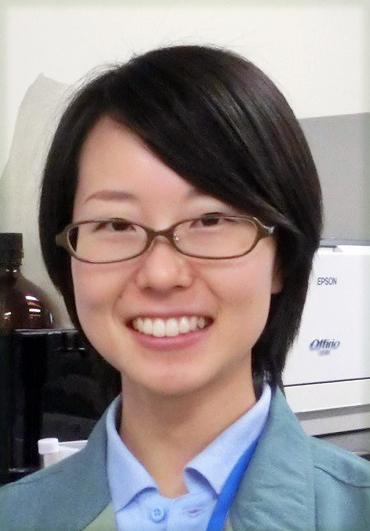Org. Synth. 2018, 95, 276-288
DOI: 10.15227/orgsyn.095.0276
Modified McFadyen-Stevens Reaction for a Versatile Synthesis of Aromatic Aldehydes
Submitted by Yuri Iwai
§ and Jun Shimokawa
‡*
1
Checked by Michael M. Yamano, Robert B. Susick, and Neil K. Garg
1. Procedure (Note 1)
A.
N-(1-Naphthoyl)-4-methylbenzenesulfonohydrazide (2). An oven-dried 1-L, three-necked round-bottomed flask is equipped with an internal thermometer, a rubber septum, argon gas inlet adaptor, a 50 mL dropping funnel, and a 3.0-cm rod-shape, Teflon-coated, magnetic stir bar. The flask is evacuated and refilled with argon twice, then charged with
4-dimethylaminopyridine (1.83 g, 15.0 mmol, 0.20 equiv) and
p-toluenesulfonyl hydrazide (14.0 g, 75.0 mmol, 1 equiv) in
CH2Cl2 (350 mL) (Figure 1) (
Note 2). The reaction mixture is stirred in an ice bath at 1200 rpm for 15 min (internal temperature is 1.0 °C), and
triethylamine (15.8 mL, 113 mmol, 1.50 equiv) is added via syringe (
Note 3).
1-Naphthoyl chloride (11.8 mL, 78.8 mmol, 1.05 equiv) in 30 mL of
CH2Cl2 is added via dropping funnel over 10 min, such that the internal temperature does not exceed 5 °C (
Note 4). The pale yellow reaction mixture is stirred in an ice bath for 30 min (
Note 5). The reaction is quenched by the addition of saturated aqueous
NH4Cl (100 mL) and the reaction mixture is poured into
H2O (300 mL) in a 2-L separatory funnel. The layers are separated, and the organic solution is washed with 10% aqueous
citric acid (200 mL), brine (100 mL) and dried over
sodium sulfate (30 g). After filtration through a cotton plug and rinsing with 50 mL of
CH2Cl2, the solution is concentrated on a rotary evaporator (40 °C, 150 mmHg, water bath) to give 25.6 g of the crude product as a pale yellow solid. The solid thus obtained is dissolved in boiling
CH2Cl2 (350 mL), and
n-hexane (250 mL) is slowly added. The mixture is then cooled in an ice bath for 1 h and the white precipitate is collected by Büchner funnel (diameter 90 mm) with a medium porosity fritted disk using suction filtration. The precipitate is washed with ice-cooled 50%
CH2Cl2 in
n-hexane (50 mL) and dried under vacuum (50 °C, 6.0 x 10
-2 mmHg, 3 h) to give
N-(1-naphthoyl)-4-methylbenzene-sulfonohydrazide (
2) (15.8 g, 46.4 mmol, 62%) as white crystals (Figure 2) (Notes
6,
7 and
8).
Figure 1. Reaction setup for the synthesis of 2
Figure 2. Sample of 2 after recrystallization
B.
1-Naphthaldehyde (3). An oven-dried 1-L, three-necked round-bottomed flask equipped with an internal thermometer, two rubber septa, argon gas inlet adaptor, and a 3.0-cm rod-shape, Teflon-coated, magnetic stir bar is evacuated and refilled with argon twice, then charged with
N-(1-naphthoyl)-4-methylbenzenesulfonohydrazide (
2) (20.0 g, 58.8 mmol, 1 equiv) in 260 mL of
toluene (
Note 9). At ambient temperature (23 °C), the stir rate is set to 600 rpm. The septum is removed temporarily and
N-trimethylsilylimidazole (15.5 mL, 106 mmol, 1.8 equiv) is added via syringe (
Note 10), and imidazole (7.21 g, 106 mmol, 1.8 equiv) is added in one portion. (Figure 3a) (
Note 11). The resulting white suspension is stirred at 900 rpm and heated in an oil bath for 4.5 h, so that the internal temperature is maintained at 55 °C (Figure 3b) (
Note 12). The pale-yellow, clear reaction mixture is cooled in an ambient temperature in water bath for 5 min and aqueous
citric acid solution (2.0 M, 53.0 mL) is added and stirred vigorously at 900 rpm for 2.5 h. The reaction mixture is poured into
H2O (250 mL) in a 2-L separatory funnel. The layers are separated, and the aqueous layer is extracted with an additional 100 mL of
toluene. The organic phase is combined, washed with
H2O (100 mL), brine (150 mL), and dried over
sodium sulfate (20 g). Filtration through a cotton plug, rinsing with 20 mL of
toluene and concentration on the rotary evaporator (45 °C, 50 mmHg, water bath) provides the crude oil (10.0 g). The crude oil is placed in 30 mL round-bottomed flask and attached to a vacuum distillation apparatus equipped with two tared receiving flasks (Figure 4).
1-Naphthaldehyde (
3) is distilled in one fraction (0.15 mmHg, 105 °C) (
Note 13). Upon completion of the distillation, the apparatus is refilled with argon. Compound
3 is obtained as a pale yellow liquid (8.40 g, 53.8 mmol, 92%) (Notes
14,
15, and
16).
Figure 3. Reaction setup for the synthesis of 3. a) Immediately after the reaction is started; b) After the reaction is complete
Figure 4. Distillation of 3
2. Notes
1. Prior to performing each reaction, a thorough hazard analysis and risk assessment should be carried out with regard to each chemical substance and experimental operation on the scale planned and in the context of the laboratory where the procedures will be carried out. Guidelines for carrying out risk assessments and for analyzing the hazards associated with chemicals can be found in references such as Chapter 4 of "Prudent Practices in the Laboratory" (The National Academies Press, Washington, D.C., 2011; the full text can be accessed free of charge at
https://www.nap.edu/catalog/12654/prudent-practices-in-the-laboratory-handling-and-management-of-chemical). See also "Identifying and Evaluating Hazards in Research Laboratories" (American Chemical Society, 2015) which is available via the associated website "Hazard Assessment in Research Laboratories" at
https://www.acs.org/content/acs/en/about/governance/committees/chemicalsafety/hazard-assessment.html. In the case of this procedure, the risk assessment should include (but not necessarily be limited to) an evaluation of the potential hazards associated with
4-dimethylaminopyridine,
p-toluenesulfonyl hydrazide,
dichloromethane,
triethylamine,
1-naphthoyl chloride,
ammonium chloride,
citric acid,
toluene,
N-trimethylsilylimidazole,
imidazole, and
n-hexane.
2. The submitters purchased
4-dimethylaminopyridine (>99%) and
p-toluenesulfonyl hydrazide (>98%) from Tokyo Chemical Industry Co., Ltd. and used as received. The submitters purchased anhydrous
CH2Cl2 (>99.5%) from Wako Pure Chemical Industries, Ltd and used after passing through the prepacked alumina column.
3. The submitters purchased
triethylamine (>99%) from Tokyo Chemical Industry Co., Ltd. and used as received.
4. The submitters purchased
1-naphthoyl chloride (>98%) from Tokyo Chemical Industry Co., Ltd. and used as received.
5. The consumption of
p-toluenesulfonyl hydrazide was monitored by TLC analysis on Merck silica gel 60 F
254 plates (0.25 mm, glass-backed, visualized with 254 nm UV lamp and stained with cerium phosphomolybdic acid) using 50%
ethyl acetate in
n-hexane as an eluant.
p-Toluenesulfonyl hydrazide had R
f = 0.33 (UV active, black after staining) and
N-(1-naphthoyl)-4-methylbenzenesulfonohydrazide (
2) had R
f = 0.66 (UV active, black after staining).
6. The product displayed the following physicochemical properties: mp 154.2-154.9 °C (decomp.); IR (film, cm
-1) 1685, 1594, 1356;
1H NMR
pdf(CDCl
2, 400 MHz) δ: 2.47 (s, 3H), 4.48 (s, 2H), 7.35 (d,
J = 8.2 Hz, 1H), 7.46-7.54 (m, 3H), 7.57 (dd,
J = 7.1, 1.2, 1H), 7.72-7.78 (m, 1H), 7.85-7.91 (m, 3H), 7.96 (d,`
J = 8.2 Hz, 1H);
13C NMR
pdf(CDCl
3, 100 MHz) δ: 21.9, 124.4, 124.6, 126.5, 126.6, 127.5, 128.8, 129.1, 129.8, 130.0, 131.2, 132.7, 133.3, 134.2, 145.6, 171.2; HRMS-APCI calcd for C
18H
17N
2O
3S ([M + H
+]) 341.09544, found 341.09448.
7. The purity was determined to be 98.1% wt. by quantitative
1H NMR
pdf spectroscopy in CDCl
3 using 22.9 mg of compound
2 and 11.1 mg of 1,3,5-trimethoxybenzene as an internal standard.
8. A second run on full scale provided 15.8 g (62%) of
2.
9. The submitters purchased anhydrous
toluene (>99.5%) from Wako Pure Chemical Industries, Ltd and used after passing through the prepacked alumina column.
10. The submitters purchased
N-trimethylsilylimidazole (>98%) from Tokyo Chemical Industry Co., Ltd. and used as received.
11. The submitters purchased
imidazole (>98%) and
N-trimethylsilylimidazole (>98%) from Tokyo Chemical Industry Co., Ltd. and used as received.
12. The consumption of
2 was monitored by TLC analysis on Merck silica gel 60 F
254 plates (0.25 mm, glass-backed, visualized with 254 nm UV lamp and stained with cerium phosphomolybdic acid) using 50%
ethyl acetate in
n-hexane as an eluant.
2 had R
f = 0.66 (UV active, black after staining) and
1-naphthaldehyde (
3) had R
f = 0.80 (UV active, black after staining). The major byproduct of the reaction is TsSC
6H
4CH
3 generated by the disproportionation of sulfinate ion. This byproduct has almost the same R
f with
3, making chromatographic purification difficult in this case.
13. The dimensions of the short path distillation apparatus used are 110 x 110 mm (height x width). The vapor temperature of the distillate was recorded as 105 °C, however, the heating bath for the distillation was heated from 135-190 °C. The distillation process was continued until no more
1-naphthaldehyde could be seen collecting into the tared flask.
14. The product displayed the following physicochemical properties: IR (film, cm-1) 1685, 1574, 1510;
1H NMR
pdf(CDCl
3, 500 MHz) δ: 7.60 (dd,
J = 8.3, 7.0 Hz, 1H), 7.64 (dd,
J = 8.3, 7.0 Hz, 1H), 7.70 (dd,
J = 8.3, 7.0 Hz, 1H), 7.93 (d,
J = 8.3 Hz, 1H), 8.00 (d,
J = 7.0 Hz, 1H), 8.11 (d,
J = 8.5 Hz, 1H), 9.26 (d,
J = 8.5 Hz, 1H), 10.41 (s, 1H);
13C NMR
pdf(CDCl
3, 100 MHz) δ: 125.02, 125.04, 127.1, 128.6, 129.2, 130.7, 131.6, 133.9, 135.4, 136.8, 193.7; HRMS-APCI calcd for C
11H
9O ([M + H
+]) 157.06479, found 157.06429.
15. The purity was determined to be 98.0% wt. by quantitative
1H NMR spectroscopy
pdf in CDCl
3 using 21.8 mg of compound
3 and 21.6 mg of 1,3,5-trimethoxybenzene as an internal standard.
16. A second run on half scale provided 3.66 g (87%).
Working with Hazardous Chemicals
The procedures in
Organic Syntheses are intended for use only by persons with proper training in experimental organic chemistry. All hazardous materials should be handled using the standard procedures for work with chemicals described in references such as "Prudent Practices in the Laboratory" (The National Academies Press, Washington, D.C., 2011; the full text can be accessed free of charge at
http://www.nap.edu/catalog.php?record_id=12654). All chemical waste should be disposed of in accordance with local regulations. For general guidelines for the management of chemical waste, see Chapter 8 of Prudent Practices.
In some articles in Organic Syntheses, chemical-specific hazards are highlighted in red "Caution Notes" within a procedure. It is important to recognize that the absence of a caution note does not imply that no significant hazards are associated with the chemicals involved in that procedure. Prior to performing a reaction, a thorough risk assessment should be carried out that includes a review of the potential hazards associated with each chemical and experimental operation on the scale that is planned for the procedure. Guidelines for carrying out a risk assessment and for analyzing the hazards associated with chemicals can be found in Chapter 4 of Prudent Practices.
The procedures described in Organic Syntheses are provided as published and are conducted at one's own risk. Organic Syntheses, Inc., its Editors, and its Board of Directors do not warrant or guarantee the safety of individuals using these procedures and hereby disclaim any liability for any injuries or damages claimed to have resulted from or related in any way to the procedures herein.
3. Discussion
Among the various known methods for the transformation of carboxylic acid derivatives into aldehydes, the traditional McFadyen-Stevens reaction
2 is a unique option. Under the original conditions reported in 1936,
N,N'-acylbenzenesulfonyl hydrazine
4 could be converted to the corresponding aldehyde, by the treatment with potassium carbonate in ethylene glycol at 160 °C. The interesting point of this reaction is that the aldehyde
5 is obtained from the corresponding carboxylic acid without using any oxidants or reductants (Scheme 1a). Throughout the proposed mechanism via
6,
7, and
8, the high temperature required in the traditional McFadyen-Stevens reaction is considered to be due to the slow N-H insertion process from nitrene
7 to generate acyldiazene
8.
3 Thus the more facile elimination of the sulfinate ion from
N,N-acylsulfonylhydrazine
4 9 was expected to afford the identical acyl diazene
8, which would reduce the reaction temperature. With the higher electron density of the neighboring nitrogen atom facilitating the elimination of a sulfinate ion from
9, an even weaker base could be employed for the reaction, thereby suppressing the undesired reactions. Among the bases examined, the reaction was most efficiently performed when
imidazole was used as the base. Since acceleration of the reaction at higher temperature resulted in the formation of a small amount of hydrazone
10, in situ protection of the aldehyde was carried out with
TMS-imidazole. This treatment circumvents the formation of the hydrazone. Facile formation of hemiaminal
11 masked the reactive aldehyde, which, upon acidic workup, regenerated aldehyde
5 in high yield.
5Synthesis of the substrate
N,N-acylsulfonylhydrazine could be performed either by our originally reported two-step synthesis via the Boc-protected intermediate, or by the direct condensation conditions between acyl chloride with sulfonyl hydrazide in the presence of DMAP as an indispensable catalyst. The latter conditions reported by Namba and Tanino were employed in the Procedure A.
4e,4f Substrate scope for the latter transformation under the established reaction conditions is shown in Table 1. Benzoic acids with
para- (entries 1-5) or
meta- (entries 7-9) substitutions could be efficiently converted to the corresponding aldehydes. The reaction conditions were mild enough that even the pinacol borate moiety survived the transformation (entry 9). For the substrates with electron withdrawing substituents, the yields were either moderate (entries 3 and 8) or, in the case of the
p-nitro group, zero in step B (entry 6) due to the formation of the acyl imidazole, resulting in the formation of the methyl ester after treatment with
citric acid in methanol. The quinolone antibiotic nalidixic acid was successfully converted into the corresponding aldehyde
8 without affecting the pyridine and the carbonyl moieties (entry 10). 5-Bromo-2-thiophenecarboxylic acid was also a good substrate (entry 11).
Scheme 1. Original and Modified McFadyen-Stevens Reactions
Table 1. Scope and Limitation of the Modified Conditions
Appendix
Chemical Abstracts Nomenclature (Registry Number)
4-Dimethylaminopyridine; (1122-58-3)
p-Toluenesulfonyl hydrazide; (1576-35-8)
Triethylamine; (121-44-8)
1-Naphthoyl chloride; (879-18-5)
Imidazole; (288-32-4)
N-Trimethylsilylimidazole; (18156-74-6)

|
Yuri Iwai was born in Kyoto, Japan. She received her B.S. in 2009 from Kyoto Pharmaceutical University where she carried out undergraduate research under the supervision of Professor Jun'ichi Uenishi. She then moved to the graduate school of pharmaceutical sciences, the University of Tokyo and started her graduate study. She obtained her Ph.D. degree in 2014 under the direction of Professor Tohru Fukuyama.
|

|
Jun Shimokawa was born in 1980 in Tokyo, Japan. He received his B.S. (2003) and M.S. (2005) degrees at the University of Tokyo under the direction of Professor Yuichi Hashimoto. He performed his Ph.D. studies under the direction of Professor Tohru Fukuyama at the University of Tokyo where he conducted the research on total syntheses of complex natural products. In 2006, He started his academic carrier as an Assistant Professor in the same laboratory. In 2012, he moved to Nagoya University, where he was appointed as an Assistant Professor in Professor Masato Kitamura's laboratory. From 2018, he is an Associate Professor in Kyoto University in Professor Hideki Yorimitsu's laboratory. His research efforts focus on the development of novel synthetic methodology and applications to the multistep synthesis of complex molecules.
|

|
Robert Susick received his B.S. in chemistry from North Carolina State University in Raleigh, NC. After graduating, he spent two years working at Cirrus Pharmaceuticals, Inc. in the Research Triangle Park of NC developing analytical methods for API quantification and stability studies. He is currently a fourth-year graduate student in Professor Neil K. Garg's laboratory at the University of California, Los Angeles. His graduate studies are focused on the total synthesis of natural products.
|

|
Michael Yamano was born in La Habra, California. He received his B. S. in 2014 from the University of California, Irvine where he carried out research under the directions of Professors Kenneth C. Janda and Vy M. Dong. He then moved to the University of California, Los Angeles (UCLA) where he is currently a fourth-year graduate student in Professor Neil K. Garg's laboratory. His graduate studies are focused on developing methodologies to harness the high reactivity of strained cyclic allenes. |
Copyright © 1921-, Organic Syntheses, Inc. All Rights Reserved